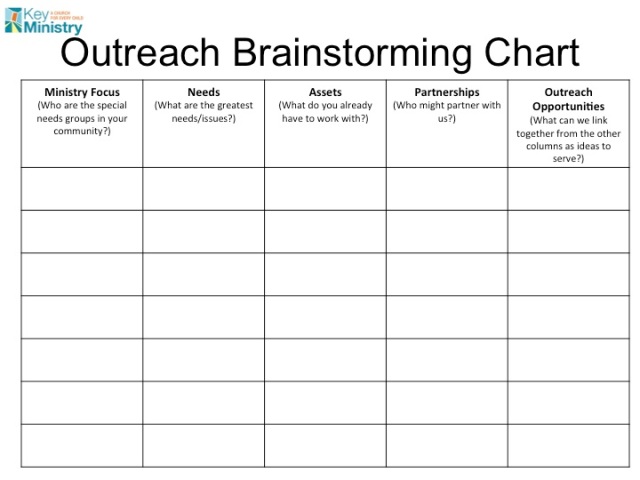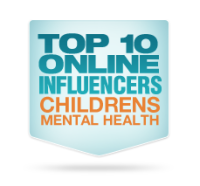 “But seek the welfare of the city where I have sent you into exile, and pray to the LORD on its behalf, for in its welfare you will find your welfare.”
“But seek the welfare of the city where I have sent you into exile, and pray to the LORD on its behalf, for in its welfare you will find your welfare.”
Jeremiah 29:7 (ESV)
Part of being a sent people is caring about where you live. God cares about the well-being of your city. God’s Spirit is already at work on behalf of the place where you live. And according to this verse the welfare of the Body of Christ is connected to the welfare of the community you are living in.
God wants us to pray for our communities, invest ourselves in their welfare, and realize that we have an important role to play in our communities. This includes the disability community. I believe that God is inviting your special needs ministry to “seek the welfare of the city” in which He’s planted you. So the question is:
How can your special needs ministry (and/or church) seek the welfare of your city today?
Answer: generate creative outreach opportunities that demonstrate the love of Jesus.
 What can you and your special needs ministry do to help people with disabilities in your community achieve their potential and experience God’s good design for their lives? No one special needs ministry (or church) can do everything . . . but each special needs ministry (or church) is called to do something.
What can you and your special needs ministry do to help people with disabilities in your community achieve their potential and experience God’s good design for their lives? No one special needs ministry (or church) can do everything . . . but each special needs ministry (or church) is called to do something.
In a previous post, I shared with you the 4 phases of doing special needs ministry outreach. The process that I’ll describe below is best accomplished after phase one!
Whether you are exploring disability-related service projects, an ongoing community outreach program, or short-term community missions project, the following exercise can help you identify outreach options that are relevant, practical, and timely for the disability community in your area.
This exercise has three steps:
1) Generate a list of disability-ministry ideas based on needs, existing resources, partnerships, and then select the most promising options.
2) Create a plan for turning each idea into action.
3) Maintain a God-centered focus throughout these steps and seek the Holy Spirit’s guidance in generating outreach opportunities.
This brainstorming exercise can be completed by an individual, but I would highly recommend completing it with a like-minded group of people. The more the better! At First Baptist Orlando, I assembled a group of ten volunteers who were energetic about special needs outreach.
Generating Ideas For Special Needs Outreach Ministry
Use the Outreach Brainstorming Chart (OBC) to generate creative thinking about special needs outreach opportunities. **Click here for a completed sample OBC and a blank template OBC.** When working with a group, reproduce the chart on a whiteboard, flipchart, or provide one OBC for each participant.
Start with Column 1, Ministry Focus. Ask your group, “Who are the special needs groups in our community?” Have people call out responses to this question. Write down all of the responses under Column 1. Do not let the process get bogged down by discussing any of the items called out. The idea at this point is to generate as many responses as possible.
Column 2: Needs. Ask your group, “What are the greatest needs/issues that the special needs groups face?” Consider spiritual, physical, relational and emotional needs as well as material ones. Again, have people call out responses to this question and write down the responses under Column 2. No discussing any of the items called out!
Column 3: Assets. Ask your group, “What assets does our ministry/church already have to work with?”List the tangible resources that your ministry and/or church already possess (such as buildings, budget, or funds). List the skills/talents of the members of your group and people they know (mechanical, computer, dance, art, etc.). Consider the assets, both tangible and skills/talents, that exist in other ministries in your church.
Be sure to consider assets that can be found in the community (such as parks, bowling alleys, libraries, Easter Seals, local Autism Society, etc.). As usual, do not bog down the process by discussing anything at this point.
Column 4: Partnerships. Ask your group, “Who might partner with us?” Identify local and national organizations, other special needs ministries, community leaders, or resource providers who offer possibilities for collaboration. Organizations that your church has connected with in the past is a good place to start.
Several things to consider: the potential partner might support the work of your special needs ministry, your special needs ministry could support their work, or the special needs ministry and partner might plan a joint ministry initiative. As usual, don’t bog down the process with discussion at this point.
After filling out these four columns, move on to column 5: Outreach Opportunities. Here is where your group is going to discuss and brainstorm a list of ministry options that connect items in two or more of the columns (not necessarily in the same rows). Quickly try to come up with 4-7 ideas, without evaluating their merits at this time.
Column 5: Outreach Opportunities. Ask your group, “What ideas/items listed in Columns 1-4 can we link together to do special needs ministry in our community?” Envision possible connections between focus, needs, assets, and partners to serve your disability community. How can your ministry/church build on its existing people, assets, skills, and relationships to bring hope to hurting people?
Have your group go through the first four columns and identify possible linkages from focus to needs to assets to partners. Using colored highlighters can help you identify connections among the various items in your lists.
- First: list each potential outreach opportunity that your group identified on a separate 8.5 by 11 inch sheet of paper. Each individual opportunity must be listed on its own sheet of paper.
- Next: use scotch tape to tape each individual outreach opportunity to the wall in the room. Avoid taping them too close together. Spread them out!
- Last: time to vote! Ask each group member to go stand next to the outreach opportunity that they like best.
Result: you now have group members standing next to a preferred outreach opportunity that identifies assets that already exist to meet a need in your disability community!
This is the point at which you can ask the group member if they would be willing to commit to turning these ideas into action plans.
II. Turning Ideas into Action Plans
The next step is to turn your ideas into action plans. For each outreach opportunity, consider the following questions:
- What are the key decisions and action steps needed to make this outreach opportunity possible?
- Who will take responsibility/accountability for the necessary action steps involved in the plan?
- Who can we connect with to obtain the necessary assets (and partners) to build our capacity and launch our ministry?
- When can we put these steps in action?
III. Keeping God-Focused
How will you make prayer, Scripture, and reliance on the Holy Spirit the bedrock of these outreach opportunities?
As you plan and work toward ways to share God’s love in your special needs community, be confident of this assurance from Scripture:
“Give, and it will be given to you; good measure, pressed down, shaken together, running over, will be put into your lap. For with the measure you use it will be measured back to you”
Luke 6:38 (ESV)
And remember this: it’s okay to simply start by putting just one outreach idea into action. As I mentioned in a previous post, the secret to launching a special needs ministry outreach is to “think small.”
If you have any questions about this process, please feel free to contact me via the Key Ministry website!







Solid stuff. Very helpful. I’ve been meditating and working through what Jer. 29 looks like in action as well. Great application.
LikeLike